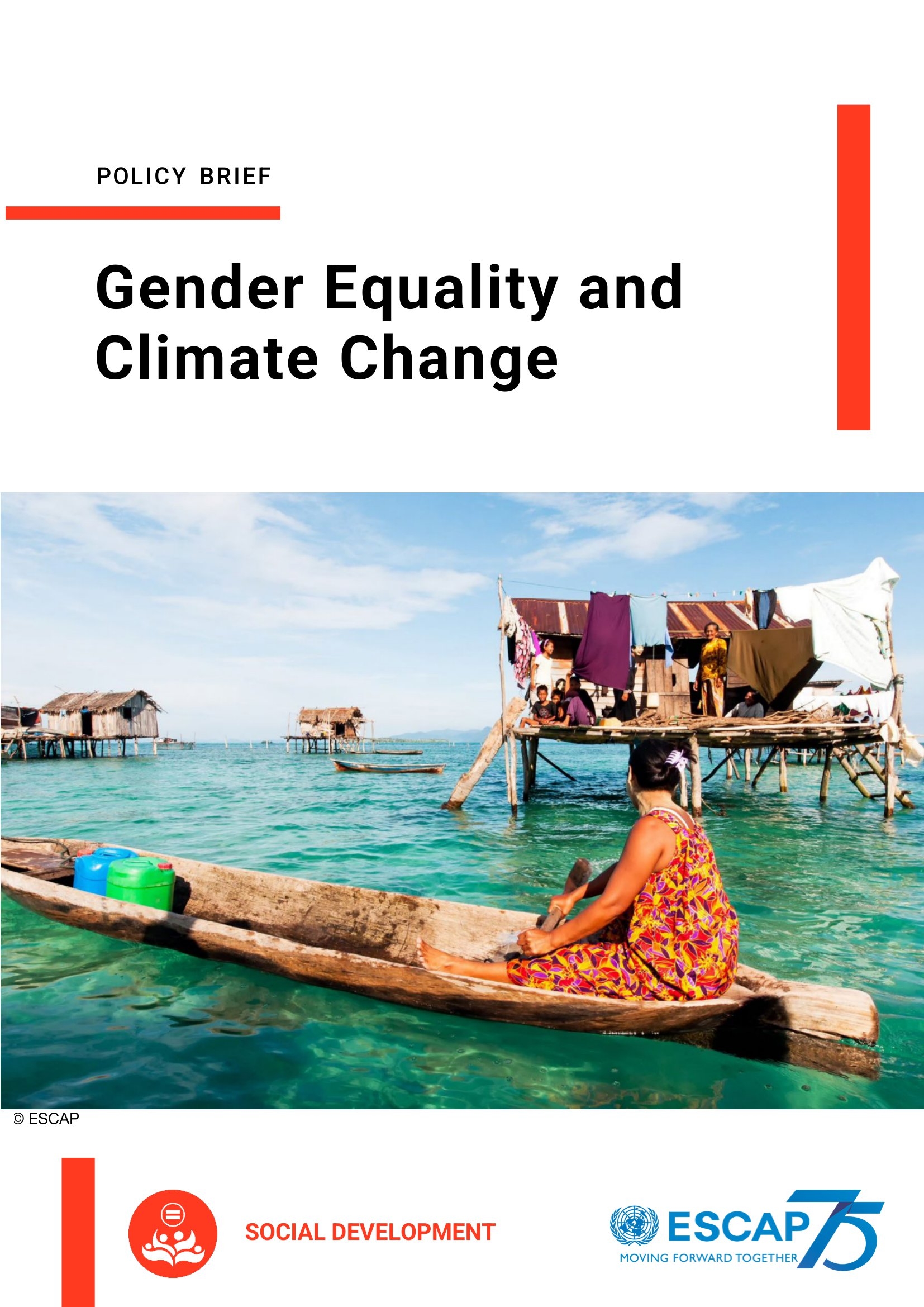
This policy brief aims to raise awareness of and spur regional action towards addressing the gender-differentiated impacts of climate change in Asia and the Pacific. While this policy brief does not attempt to provide a comprehensive picture of climate change from a gender angle, it rather offers examples of how climate change impacts women and girls disproportionately in the region and highlights the importance of including their voices in climate change action. In particular, it looks at the consequences of climate change through a gender lens in three thematic areas identified for priority action: The feminization of agriculture, women’s ever-increasing share of unpaid care and domestic work in the region, and women’s participation and representation in climate action.
Climate change is reshaping the development scope of the Asia-Pacific region, with the risks from tropical cyclones, floods, droughts, and storms increasing significantly. Although some countries in the region are among the lowest carbon emitters in the world, they are some of the most impacted by climate-related extreme weather. Countries in the region that were previously unaffected by floods are becoming hotspots of flood exposure due to climate change. The number of people exposed to extreme temperatures increases yearly, affecting the most vulnerable populations the most.
It is a well known fact that women are disproportionately affected by natural disasters. For instance, women employed in sectors such as agriculture and the tourism industry are profoundly impacted by catastrophes and disasters, leaving them jobless when disasters occur. The loss of primary household income and economic independence affects women’s well-being and often – in addition - leads to an increase in gender-based violence. This is exacerbated by societal norms and attitudes that expect women and girls to shoulder the burdens of additional unpaid care and domestic work caused by climate change, such as securing water, food and fuel for cooking and heating with limited access to resources.
These compounding factors lead women and girls in Asia and the Pacific to experience the greatest impacts of climate change, which – in turn - amplifies existing gender inequalities and poses unique threats to their livelihoods, health, and safety.

